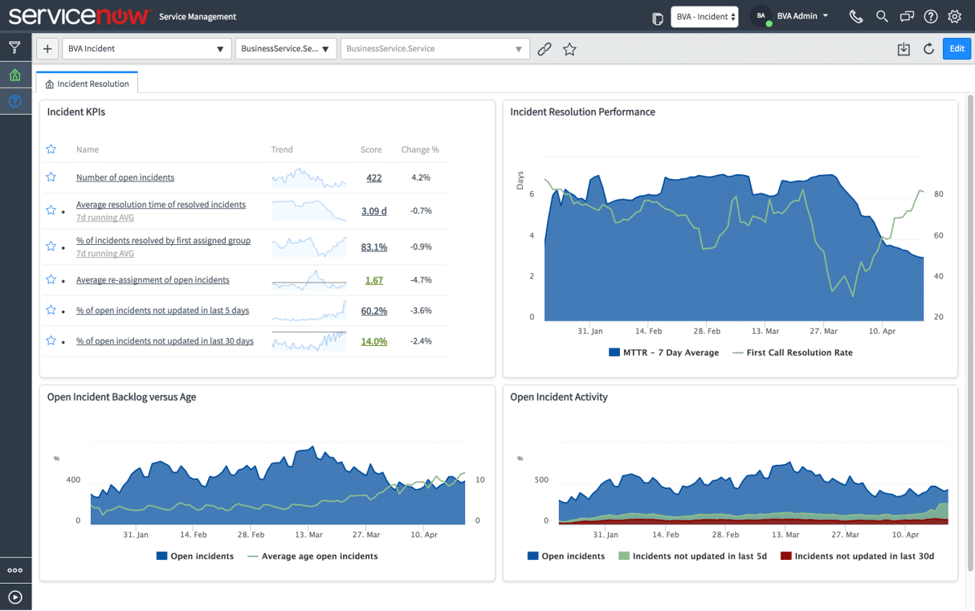In the realm of IT service management (ITSM), measuring and optimizing incident resolution time is crucial for ensuring operational efficiency and maintaining service quality. ServiceNow, a leading ITSM platform, offers Timer Resolution robust capabilities for managing incidents, including tools to calculate and analyze resolution times. In this guide, we’ll delve into the intricacies of calculating average resolution time (ART) for incidents in ServiceNow, empowering you to streamline your incident management processes and enhance overall service delivery.
Understanding Average Resolution Time
In the context of ITSM, Average Resolution Time (ART) refers to the average duration it takes to resolve incidents reported by users or detected by monitoring systems. It is a key performance indicator (KPI) that reflects the efficiency of an organization’s incident management processes. By tracking ART, organizations can identify bottlenecks, allocate resources effectively, and improve service levels.
Leveraging ServiceNow for Incident Management
ServiceNow offers a comprehensive platform for incident management, providing tools for logging, categorizing, prioritizing, and resolving incidents efficiently. Leveraging ServiceNow’s robust features, organizations can streamline their incident resolution workflows and enhance overall service delivery. Key functionalities include:
Incident Logging:
Users can easily report incidents through various channels, such as self-service portals, email, or phone calls. ServiceNow automatically captures relevant details, including the incident description, category, priority, and affected assets.
Incident Assignment:
ServiceNow assigns incidents to the appropriate support personnel based on predefined criteria, such as skills, availability, and Time Resolution workload. This ensures that incidents are routed to the most qualified individuals for timely resolution.
SLA Management:
ServiceNow allows organizations to define Service Level Agreements (SLAs) specifying the target resolution times for different types of incidents. SLA breaches trigger notifications and escalations, enabling proactive management of service commitments.
Knowledge Base Integration:
ServiceNow integrates with knowledge management systems, empowering support agents to access relevant troubleshooting guides, solutions, and best practices during the incident resolution process. This accelerates problem diagnosis and resolution, reducing ART.
Reporting and Analytics:
ServiceNow provides robust reporting and analytics capabilities, allowing organizations to track various metrics, including ART, first response time, resolution rate, and customer satisfaction. Customizable dashboards and reports offer actionable insights for continuous improvement.
Calculating Average Resolution Time (ART) in ServiceNow
ServiceNow offers built-in features for calculating ART, enabling organizations to track and analyze resolution times effectively. The ART calculation typically involves the following steps:
Define Incident Resolution Time:
Incident Resolution Time refers to the duration between the incident creation and its resolution. In ServiceNow, this is usually measured in hours, minutes, or days, depending on the organization’s preferences and SLA requirements.
Capture Incident Creation and Resolution Timestamps:
ServiceNow automatically captures timestamps for incident creation and resolution when incidents are logged and closed within the platform. These timestamps are essential for calculating the elapsed time for each incident.
Calculate Resolution Time for Each Incident:
To calculate the resolution time for an incident, subtract the creation timestamp from the resolution timestamp. The result represents the total duration taken to resolve the incident in the chosen time units (e.g., hours).
Aggregate Resolution Times for All Incidents:
Once resolution times are calculated for individual incidents, aggregate the values to determine the total resolution time for a specific period, such as a day, week, or month.
Compute Average Resolution Time (ART):
To calculate ART, divide the total resolution time by the number of incidents resolved during the same period. The resulting value represents the average duration it takes to resolve incidents within the specified timeframe.
Best Practices for Improving Average Resolution Time (ART)
Achieving optimal ART requires a combination of efficient processes, skilled personnel, and robust technology. Here are some best practices for improving ART in ServiceNow:Streamline Incident Handling Workflows: Standardize and automate incident resolution workflows to minimize manual intervention and reduce resolution times.
Implement Prioritization Mechanisms:
Define clear criteria for incident prioritization based on impact, urgency, and business impact. Ensure that high-priority incidents receive immediate attention to expedite resolution.
Invest in Training and Skill Development: Equip support personnel with the necessary skills and knowledge to diagnose and resolve incidents promptly. Continuous training and certification programs can enhance proficiency and efficiency.
Leverage Automation and AI Capabilities:
Explore ServiceNow’s automation and artificial intelligence (AI) capabilities to automate repetitive tasks, perform trend analysis, and predict potential incidents before they escalate.
Conclusion:
Effective incident management is essential for maintaining IT service quality and meeting business objectives. By mastering the calculation and optimization of Average Resolution Time (ART) in ServiceNow, organizations can enhance operational efficiency, minimize downtime, and improve overall customer satisfaction. By leveraging ServiceNow’s robust incident management capabilities and implementing best practices, organizations can streamline their incident resolution processes and drive continuous improvement in service delivery.
